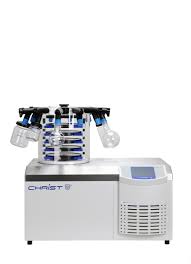
Freeze-dryer Martin Christ Beta 2-8 LSC plus

Compact tabletop unit for effective lyophilisation of specimens with innovative Wireless Shelf Technology. The freeze dryer can be configured with tried and tested accessories to meet your specific needs. The simple and intuitive LSCplus controller supports manual and automatic process control for reproducible results. Two different drying methods are available to handle virtually every task. -85° C condenser temerature for specimens containing solvents or with low eutectic points. Ice condenser capacity is 8 liter.
SPECIFICATION
Product specifications Controller LSCplus Method Single-Chamber Max. number of sheves 1 Shelf diameter 200 mm Total shelf area 0,031 m² Max. container height 60 mm Shelf temperature -35 °C to +60 °C
Publications
If interested, please fill out the form below
BBCE project´s main objective is to establish a joint Baltic Biomaterials Centre of Excellence for advanced biomaterials development based on the long-term strategic cooperation between AO Research Institute Davos, Switzerland (ARI) and Friedrich-Alexander University of Erlangen-Nuremberg, Germany (FAU) on the one hand and RTU RBIDC, LIOS, RSU and RSU IS on the other hand.

